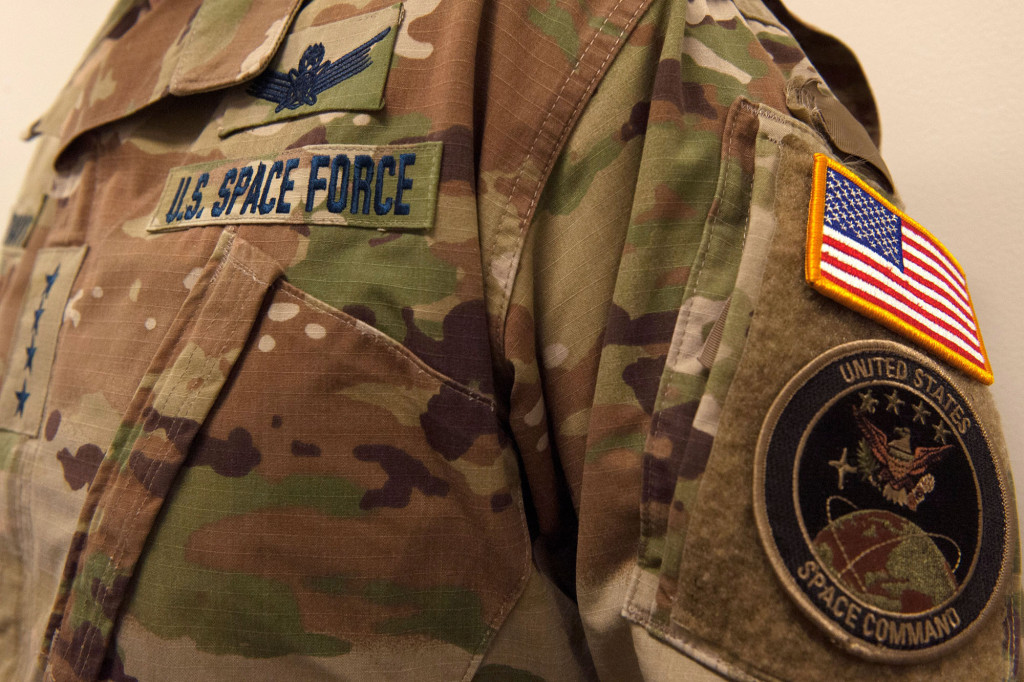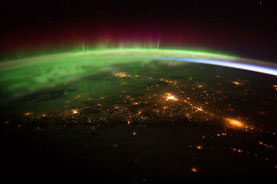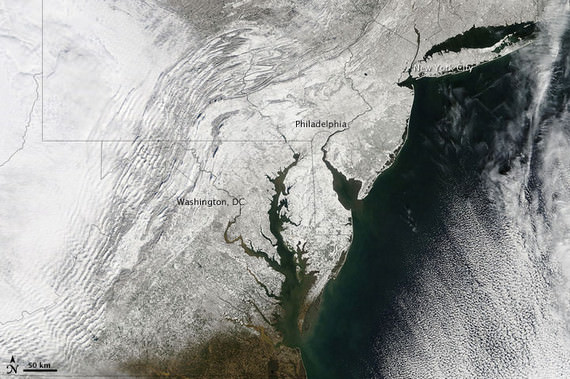The newest branch of the US Military has a logo and a motto now. The mottos is Semper Supra, meaning ‘Always Above’. The logo’s main feature is a delta wing design.
Continue reading “Here’s the New Space Force Logo”Space Force Uniforms are Perfectly Camouflaged for a Forest Moon
The United States Space Force has given us a look at their new uniforms, and critics are savaging them on Twitter and elsewhere. That’s because the new uniforms are camouflage.
Continue reading “Space Force Uniforms are Perfectly Camouflaged for a Forest Moon”A Continent Ablaze in Auroral and Manmade Light
Video Caption: Up the East Coast of North America. Credit: NASA
The North American continent is literally set ablaze in a confluence of Auroral and Manmade light captured in spectacular new videos snapped by the astronauts serving aboard the International Space Station (ISS).
The Expedition 30 crew has recently filmed lengthy sequences of images that are among the most stunning ever taken by astronauts flying in orbit some 240 miles (385 kilometers) over the United States and Canada.
[/caption]
Teams working at the Crew Earth Observations center at NASA’s Johnson Space Center in Houston, Texas have assembled hundreds of individual still images taken onboard the ISS into a series of amazing videos.
Two videos collected here focus on the East and West coasts of North America and show the path traveled by the station from the crew’s perspective as they photographed the light emitted by hundreds of millions of humans living below and the brilliant light of the Aurora Borealis shining above them.
Recently we highlighted a single night time snapshot of the East Coast and tens of millions of humans.
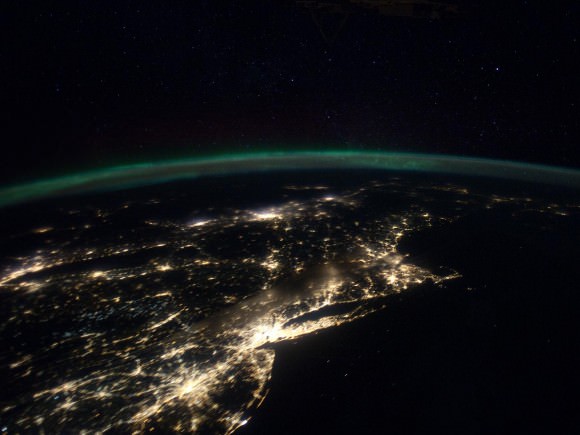
Astronauts captured this stunning nighttime panorama of the major cities along the East Coast of the United States on Jan. 29. Credit: NASA
Now the NASA team has assembled the entire sequence of images taken on January 29, 2012 from 05:33:11 to 05:48:10 GMT into a video -see above.
The orbital pass runs from Central America just southwest of Mexico and continues to the North Atlantic Ocean, northeast of Newfoundland. It begins by looking over Central America towards the Gulf of Mexico and the southeastern United States. As the ISS travels northeast over the gulf, some southeastern United States cities can be distinguished, like New Orleans, Mobile, Jacksonville, and Atlanta. Continuing up the east coast, some northeastern states, like Washington, D.C., Baltimore, Philadelphia, and New York City stand out brightly along the coastline. The Aurora Borealis shines in the background as the pass finishes near Newfoundland
The 2nd video is titled “Across Southwest Canada at Night”
This sequence of shots was taken January 25, 2012 from 12:34:11 to 12:36:28 GMT, on a pass from near the border of British Columbia, Canada and Washington state, near Vancouver Island, to southern Alberta, near Calgary.
The main focus of this video is the Aurora Borealis over Canada, which appears very near the ISS during this short and exciting video.
And don’t forget the fabulous ISS shots of Comet Lovejoy taken in December 2011 by Expedition 30 Commander Dan Burbank.
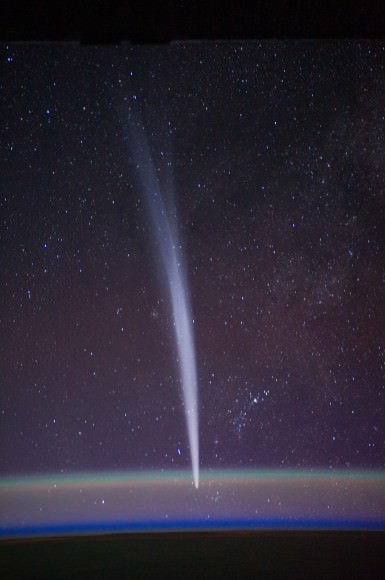
For an otherworldly and eerie perspective, click here to see what a Manmade artifact on the surface of Mars looks like as seen from Mars Orbit – also taken just a few days ago on Jan. 29, 2012, but this time by a robot in place of a human !
Cities at Night Panorama of Millions of US East Coast Earthlings
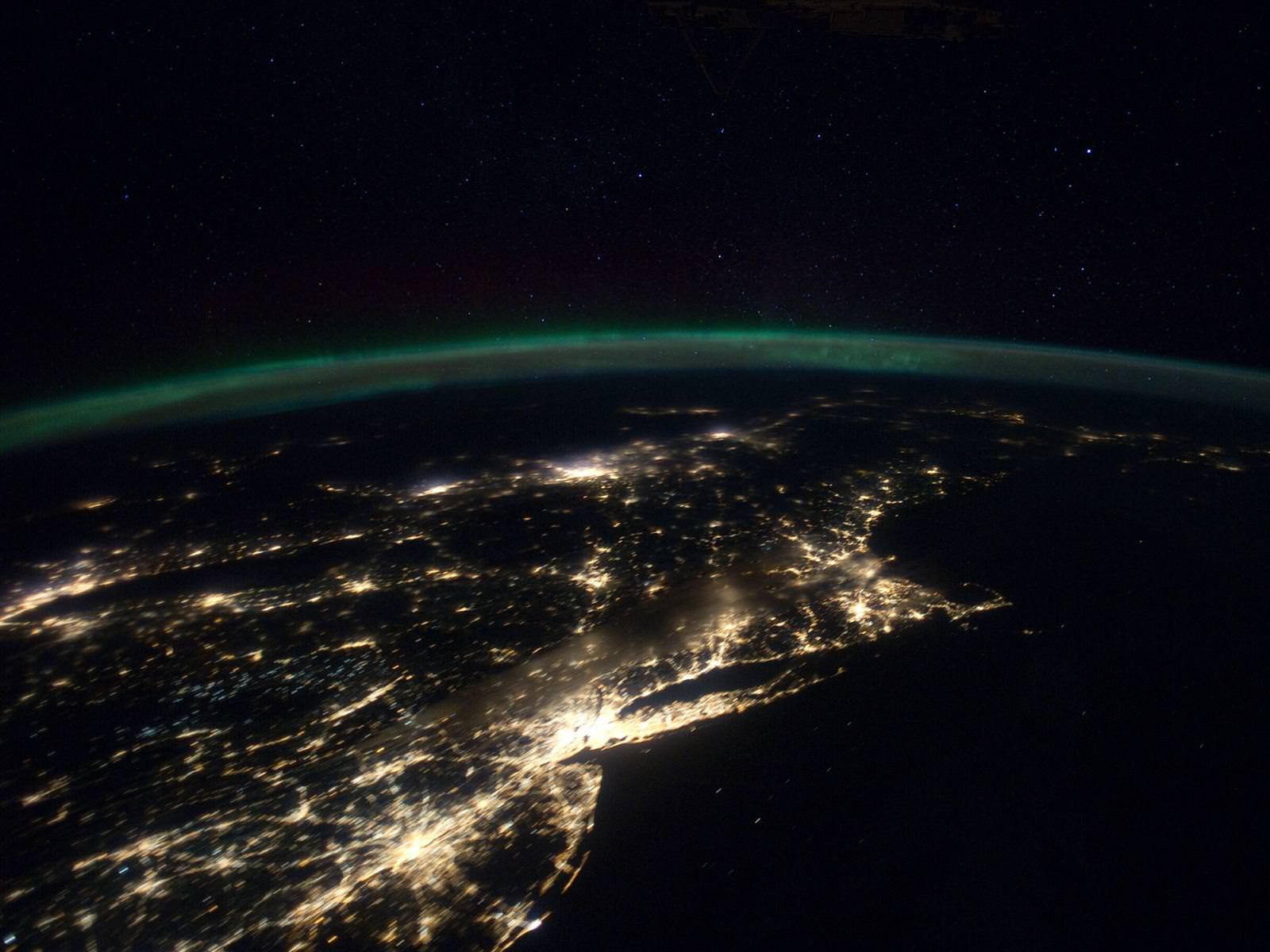
[/caption]
Do you live here?
Tens of millions of Earthlings live and work in the bustling and seemingly intertwined American mega-metropolis of the Philadelphia-New York City-Boston corridor (bottom-center splotch) captured in this stunning “Cities at Night” panorama of the East Coast of the United States along the Atlantic seaboard (image above).
Look northward and you’ll see the home to millions more Earthlings inhabiting the brilliantly lit Canadian cities of Toronto (launch site for “Lego Man in Space“) and Montreal to the west of Lake Ontario (dark oval at left-center).
The gorgeous panorama showing a portion of the Earth at Night and the atmospheric limb and light activity from the Aurora Borealis was snapped by the Expedition 30 crew living and working aboard the million pound International Space Station (ISS) on Jan. 29.
Lately, the 6 man international crew of Expedition 30 from Russia, Holland and the US have been on a roll taking one after another magnificent Nighttime pictures of our Home Planet, Auroras’ and celestial wonders like Comet Lovejoy.
Be sure to take a comparative look at the recent panorama of Western Europe at Night snapped by the ISS crew a week before on Jan 22 – here.
To test your geography smarts, here’s a map of the US East Coast highlighting much of what’s visible in the ISS panorama.
This Earthling has lived in cities on the US East Coast and Western Europe – images above and below
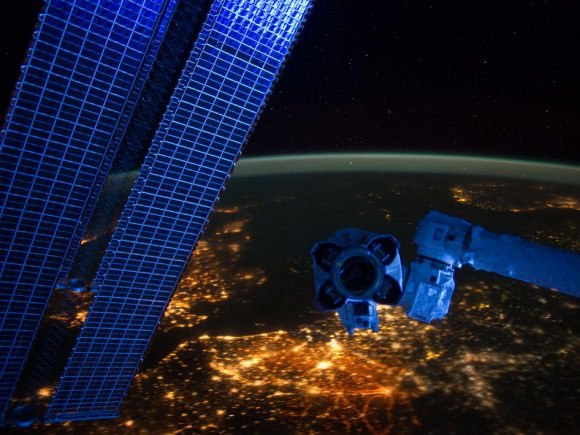
European ‘Cities at Night’ from the ISS with station solar arrays and robotic hand in foreground. Credit: NASA
Two years ago in Feb. 2010, the US East Coast was struck by “Snowmageddon”, and this is how we looked from space
Meanwhile, two of the Expedition 30 crew members, Russian Flight Engineers Oleg Kononenko and Anton Shkaplerov, are preparing for a spacewalk on Friday, Feb. 16. They will be installing equipment outside the ISS on the Russian Pirs, Poisk and Zvezda modules.


